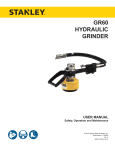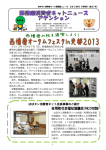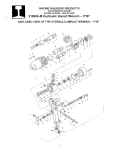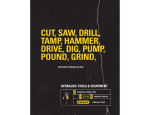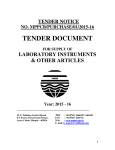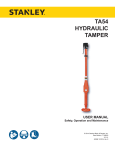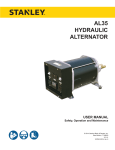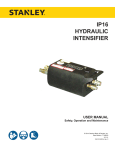Download E-Lins H980 Series User manual
Transcript
HG80 HYDRAULIC GRINDER USER MANUAL Safety, Operation and Maintenance © 2014 Stanley Black & Decker, Inc. New Britain, CT 06053 U.S.A. 28075 8/2014 Ver. 8 TABLE OF CONTENTS SAFETY SYMBOLS...................................................................................................................................................4 SAFETY PRECAUTIONS...........................................................................................................................................5 TOOL STICKERS & TAGS.........................................................................................................................................7 HOSE TYPES.............................................................................................................................................................8 HOSE RECOMMENDATIONS...................................................................................................................................9 FIGURE 1. TYPICAL HOSE CONNECTIONS........................................................................................................9 HTMA REQUIREMENTS..........................................................................................................................................10 OPERATION............................................................................................................................................................. 11 TOOL PROTECTION & CARE.................................................................................................................................12 TROUBLESHOOTING.............................................................................................................................................13 SPECIFICATIONS....................................................................................................................................................14 ACCESSORIES.......................................................................................................................................................14 HG80 PARTS ILLUSTRATION.................................................................................................................................15 HG80 PARTS LIST...................................................................................................................................................16 IMPORTANT To fill out a Product Warranty Recording form, and for information on your warranty, visit Stanleyhydraulics.com and select the Company tab, Warranty. (NOTE: The warranty recording form must be submitted to validate the warranty). SERVICING: This manual contains safety, operation, and routine maintenance instructions. Stanley Hydraulic Tools recommends that servicing of hydraulic tools, other than routine maintenance, must be performed by an authorized and certified dealer. Please read the following warning. WARNING SERIOUS INJURY OR DEATH COULD RESULT FROM THE IMPROPER REPAIR OR SERVICE OF THIS TOOL. REPAIRS AND / OR SERVICE TO THIS TOOL MUST ONLY BE DONE BY AN AUTHORIZED AND CERTIFIED DEALER. For the nearest authorized and certified dealer, call Stanley Hydraulic Tools at the number listed on the back of this manual and ask for a Customer Service Representative. HG80 User Manual ◄ 3 SAFETY SYMBOLS Safety symbols and signal words, as shown below, are used to emphasize all operator, maintenance and repair actions which, if not strictly followed, could result in a life-threatening situation, bodily injury or damage to equipment. This is the safety alert symbol. It is used to alert you to potential personal injury hazards. Obey all safety messages that follow this symbol to avoid possible injury or death. DANGER This safety alert and signal word indicate an imminently hazardous situation which, if not avoided, will result in death or serious injury. WARNING This safety alert and signal word indicate a potentially hazardous situation which, if not avoided, could result in death or serious injury. CAUTION This safety alert and signal word indicate a potentially hazardous situation which, if not avoided, could result in death or serious injury. CAUTION This signal word indicates a potentially hazardous situation which, if not avoided, may result in property damage. NOTICE This signal word indicates a situation which, if not avoided, will result in damage to the equipment. IMPORTANT This signal word indicates a situation which, if not avoided, may result in damage to the equipment. Always observe safety symbols. They are included for your safety and for the protection of the tool. LOCAL SAFETY REGULATIONS Enter any local safety regulations here. Keep these instructions in an area accessible to the operator and maintenance personnel. 4 ► HG80 User Manual SAFETY PRECAUTIONS Tool operators and maintenance personnel must always comply with the safety precautions given in this manual and on the stickers and tags attached to the tool and hose. • Do not operate the tool with the wheel guard removed. • These safety precautions are given for your safety. Review them carefully before operating the tool and before performing general maintenance or repairs. Do not operate a damaged, improperly adjusted, or incompletely assembled grinder. • Never wear loose clothing that can get entangled in the working parts of the tool. • Keep all parts of your body away from the rotating wheel. Long hair or loose clothing can become drawn into rotating components. • Keep the wheel off all surfaces when starting the grinder. • Do not use a wheel that is cracked, chipped or otherwise damaged. Always inspect wheels for possible damage before installation or use. • Always use wheels that conform to the specifications given in the OPERATION section of this manual. • Do not reverse grinding wheel rotation direction by changing fluid flow direction. • Do not move the tool until the wheel has stopped rotating. Release the trigger if the power supply has been interrupted. • To avoid personal injury or equipment damage, all tool repair, maintenance and service must only be performed by authorized and properly trained personnel. • If the material being ground creates an emission of dust and fumes, use personal protective devices. • Never cock, jam or wedge the grinding wheel during operation. • Never cause sparks in the vicinity of flammable materials. • Eye injury, and cutting or severing of body parts is possible if proper procedures are not followed. • Warning: Use of this tool on certain materials during demolition could generate dust potentially containing a variety of hazardous substances such as asbestos, silica or lead. Inhalation of dust containing these or other hazardous substances could result in serious injury, cancer or death. Protect yourself and those around you. Research and understand the materials you are cutting. Follow correct safety procedures and comply with all applicable national, state or provisional health and safety regulations relating to them, including, if appropriate arranging for the safe disposal of the materials by a qualified person. Supervising personnel should develop additional precautions relating to the specific work area and local safety regulations. If so, place the added precautions in the space provided in this manual. The model HG80 Hydraulic Grinder will provide safe and dependable service if operated in accordance with the instructions given in this manual. Read and understand this manual and any stickers and tags attached to the grinder and hose before operation. Failure to do so could result in personal injury or equipment damage. • The operator must start in a work area without bystanders. Flying debris can cause serious injury. • Do not operate the tool unless thoroughly trained or under the supervision of an instructor. Establish a training program for all operators to ensure safe operation. • Always wear safety equipment such as goggles, ear and head protection, and safety shoes at all times when operating the tool. Use gloves and aprons when necessary. • The operator must be familiar with all prohibited work areas such as excessive slopes and dangerous terrain conditions. • Do not inspect, clean or replace the grinding wheel while the hydraulic power source is connected. Do not inspect or clean the tool while the hydraulic power source is connected. Accidental engagement of the tool can cause serious in jury. • Always connect hoses to the tool hose couplers before energizing the hydraulic power source. Be sure all hose connections are tight and are in good condition. • Do not operate the tool at oil temperatures above 140 °F/60 °C. Operation at higher temperatures can cause higher than normal temperatures at the tool which can result in operator discomfort. HG80 User Manual ◄ 5 SAFETY PRECAUTIONS GRINDING WHEEL SAFETY • Ensure that the grinding wheel is correctly mounted and tightened before use. • Operate the grinder at “no load” for 30 seconds in a safe position and ensure there is no vibration or other defects detected. If considerable vibration or other defects are detected, stop operation of the tool immediately and determine the cause. Do not use the tool until the defect is corrected. • If the grinder is dropped with an abrasive wheel installed, the abrasive wheel should be examined thoroughly before use. • Only use abrasive wheels that comply with ANSI B7.1/ISO 525, 603. 6 ► HG80 User Manual • Check that the maximum rpm operating speed of the abrasive wheel is equal to or greater than the rated shaft speed of the grinder. • Ensure that the grinding wheel dimensions are compatible with the grinder and that the grinding wheel fits the shaft. • Ensure that the thread type and size of the grinding wheel exactly matches the thread type and size of the shaft. TOOL STICKERS & TAGS 25413 HG80 Name Tag 25414 HG80110B CAUTION DECAL 25556 HG80120B CAUTION DECAL 25610 Railroad Help Desk Sticker 05153 Stanley Sticker 03787 GPM Sticker 7–10 2000 PSI NOTE: THE INFORMATION LISTED ON THE STICKERS SHOWN, MUST BE LEGIBLE AT ALL TIMES. REPLACE DECALS IF THEY BECOME WORN OR DAMAGED. REPLACEMENTS ARE AVAILABLE FROM YOUR LOCAL STANLEY DISTRIBUTOR. The safety tag (P/N 15875) at right is attached to the tool when shipped from the factory. Read and understand the safety instructions listed on this tag before removal. We suggest you retain this tag and attach it to the tool when not in use. D A N G E R 1. FAILURE TO USE HYDRAULIC HOSE LABELED AND CERTIFIED AS NON-CONDUCTIVE WHEN USING HYDRAULIC TOOLS ON OR NEAR ELECTRICAL LINES MAY RESULT IN DEATH OR SERIOUS INJURY. BEFORE USING HOSE LABELED AND CERTIFIED AS NONCONDUCTIVE ON OR NEAR ELECTRIC LINES BE SURE THE HOSE IS MAINTAINED AS NON-CONDUCTIVE. THE HOSE SHOULD BE REGULARLY TESTED FOR ELECTRIC CURRENT LEAKAGE IN ACCORDANCE WITH YOUR SAFETY DEPARTMENT INSTRUCTIONS. 2. A HYDRAULIC LEAK OR BURST MAY CAUSE OIL INJECTION INTO THE BODY OR CAUSE OTHER SEVERE PERSONAL INJURY. A. DO NOT EXCEED SPECIFIED FLOW AND PRESSURE FOR THIS TOOL. EXCESS FLOW OR PRESSURE MAY CAUSE A LEAK OR BURST. B. DO NOT EXCEED RATED WORKING PRESSURE OF HYDRAULIC HOSE USED WITH THIS TOOL. EXCESS PRESSURE MAY CAUSE A LEAK OR BURST. C. CHECK TOOL HOSE COUPLERS AND CONNECTORS DAILY FOR LEAKS. DO NOT FEEL FOR LEAKS WITH YOUR HANDS. CONTACT WITH A LEAK MAY RESULT IN SEVERE PERSONAL INJURY. D A N G E R D. DO NOT LIFT OR CARRY TOOL BY THE HOSES. DO NOT ABUSE HOSE. DO NOT USE KINKED, TORN OR DAMAGED HOSE. 3. MAKE SURE HYDRAULIC HOSES ARE PROPERLY CONNECTED TO THE TOOL BEFORE PRESSURING SYSTEM. SYSTEM PRESSURE HOSE MUST ALWAYS BE CONNECTED TO TOOL “IN” PORT. SYSTEM RETURN HOSE MUST ALWAYS BE CONNECTED TO TOOL “OUT” PORT. REVERSING CONNECTIONS MAY CAUSE REVERSE TOOL OPERATION WHICH CAN RESULT IN SEVERE PERSONAL INJURY. 4. DO NOT CONNECT OPEN-CENTER TOOLS TO CLOSEDCENTER HYDRAULIC SYSTEMS. THIS MAY RESULT IN LOSS OF OTHER HYDRAULIC FUNCTIONS POWERED BY THE SAME SYSTEM AND/OR SEVERE PERSONAL INJURY. 5. BYSTANDERS MAY BE INJURED IN YOUR WORK AREA. KEEP BYSTANDERS CLEAR OF YOUR WORK AREA. 6. WEAR HEARING, EYE, FOOT, HAND AND HEAD PROTECTION. 7. TO AVOID PERSONAL INJURY OR EQUIPMENT DAMAGE, ALL TOOL REPAIR MAINTENANCE AND SERVICE MUST ONLY BE PERFORMED BY AUTHORIZED AND PROPERLY TRAINED PERSONNEL. I M P O R T A N T I M P O R T A N T READ OPERATION MANUAL AND SAFETY INSTRUCTIONS FOR THIS TOOL BEFORE USING IT. READ OPERATION MANUAL AND SAFETY INSTRUCTIONS FOR THIS TOOL BEFORE USING IT. USE ONLY PARTS AND REPAIR PROCEDURES APPROVED BY STANLEY AND DESCRIBED IN THE OPERATION MANUAL. USE ONLY PARTS AND REPAIR PROCEDURES APPROVED BY STANLEY AND DESCRIBED IN THE OPERATION MANUAL. TAG TO BE REMOVED ONLY BY TOOL OPERATOR. TAG TO BE REMOVED ONLY BY TOOL OPERATOR. SEE OTHER SIDE SEE OTHER SIDE SAFETY TAG P/N 15875 (Shown smaller then actual size) HG80 User Manual ◄ 7 HOSE TYPES The rated working pressure of the hydraulic hose must be equal to or higher than the relief valve setting on the hydraulic system. There are three types of hydraulic hose that meet this requirement and are authorized for use with Stanley Hydraulic Tools. They are: Certified non-conductive — constructed of thermoplastic or synthetic rubber inner tube, synthetic fiber braid reinforcement, and weather resistant thermoplastic or synthetic rubber cover. Hose labeled certified nonconductive is the only hose authorized for use near electrical conductors. Wire-braided (conductive) — constructed of synthetic rubber inner tube, single or double wire braid reinforcement, and weather resistant synthetic rubber cover. This hose is conductive and must never be used near electrical conductors. Fabric-braided (not certified or labeled non-conductive) — constructed of thermoplastic or synthetic rubber inner tube, synthetic fiber braid reinforcement, and weather resistant thermoplastic or synthetic rubber cover. This hose is not certified non-conductive and must never be used near electrical conductors. HOSE SAFETY TAGS To help ensure your safety, the following DANGER tags are attached to all hose purchased from Stanley Hydraulic Tools. DO NOT REMOVE THESE TAGS. If the information on a tag is illegible because of wear or damage, replace the tag immediately. A new tag may be obtained from your Stanley Distributor. D A N G E R D A N G E R 1. FAILURE TO USE HYDRAULIC HOSE LABELED AND CERTIFIED AS NON-CONDUCTIVE WHEN USING HYDRAULIC TOOLS ON OR NEAR ELECTRIC LINES MAY RESULT IN DEATH OR SERIOUS INJURY. FOR PROPER AND SAFE OPERATION MAKE SURE THAT YOU HAVE BEEN PROPERLY TRAINED IN CORRECT PROCEDURES REQUIRED FOR WORK ON OR AROUND ELECTRIC LINES. 2. BEFORE USING HYDRAULIC HOSE LABELED AND CERTIFIED AS NON-CONDUCTIVE ON OR NEAR ELECTRIC LINES. WIPE THE ENTIRE LENGTH OF THE HOSE AND FITTING WITH A CLEAN DRY ABSORBENT CLOTH TO REMOVE DIRT AND MOISTURE AND TEST HOSE FOR MAXIMUM ALLOWABLE CURRENT LEAKAGE IN ACCORDANCE WITH SAFETY DEPARTMENT INSTRUCTIONS. 3. DO NOT EXCEED HOSE WORKING PRESSURE OR ABUSE HOSE. IMPROPER USE OR HANDLING OF HOSE COULD RESULT IN BURST OR OTHER HOSE FAILURE. KEEP HOSE AS FAR AWAY AS POSSIBLE FROM BODY AND DO NOT PERMIT DIRECT CONTACT DURING USE. CONTACT AT THE BURST CAN CAUSE BODILY INJECTION AND SEVERE PERSONAL INJURY. 4. HANDLE AND ROUTE HOSE CAREFULLY TO AVOID KINKING, ABRASION, CUTTING, OR CONTACT WITH HIGH TEMPERATURE SURFACES. DO NOT USE IF KINKED. DO NOT USE HOSE TO PULL OR LIFT TOOLS, POWER UNITS, ETC. 5. CHECK ENTIRE HOSE FOR CUTS CRACKS LEAKS ABRASIONS, BULGES, OR DAMAGE TO COUPLINGS IF ANY OF THESE CONDITIONS EXIST, REPLACE THE HOSE IMMEDIATELY. NEVER USE TAPE OR ANY DEVICE TO ATTEMPT TO MEND THE HOSE. 6. AFTER EACH USE STORE IN A CLEAN DRY AREA. SEE OTHER SIDE SIDE 1 SEE OTHER SIDE (Shown smaller than actual size) DO NOT REMOVE THIS TAG DO NOT REMOVE THIS TAG THE TAG SHOWN BELOW IS ATTACHED TO “CERTIFIED NON-CONDUCTIVE” HOSE SIDE 2 D A N G E R D A N G E R 1. DO NOT USE THIS HYDRAULIC HOSE ON OR NEAR ELECTRIC LINES. THIS HOSE IS NOT LABELED OR CERTIFIED AS NON-CONDUCTIVE. USING THIS HOSE ON OR NEAR ELECTRICAL LINES MAY RESULT IN DEATH OR SERIOUS INJURY. 5. CHECK ENTIRE HOSE FOR CUTS CRACKS LEAKS ABRASIONS, BULGES, OR DAMAGE TO COUPLINGS IF ANY OF THESE CONDITIONS EXIST, REPLACE THE HOSE IMMEDIATELY. NEVER USE TAPE OR ANY DEVICE TO ATTEMPT TO MEND THE HOSE. 2. FOR PROPER AND SAFE OPERATION MAKE SURE THAT YOU HAVE BEEN PROPERLY TRAINED IN CORRECT PROCEDURES REQUIRED FOR WORK ON OR AROUND ELECTRIC LINES. 6. AFTER EACH USE STORE IN A CLEAN DRY AREA. 3. DO NOT EXCEED HOSE WORKING PRESSURE OR ABUSE HOSE. IMPROPER USE OR HANDLING OF HOSE COULD RESULT IN BURST OR OTHER HOSE FAILURE. KEEP HOSE AS FAR AWAY AS POSSIBLE FROM BODY AND DO NOT PERMIT DIRECT CONTACT DURING USE. CONTACT AT THE BURST CAN CAUSE BODILY INJECTION AND SEVERE PERSONAL INJURY. 4. HANDLE AND ROUTE HOSE CAREFULLY TO AVOID KINKING, CUTTING, OR CONTACT WITH HIGH TEMPERATURE SURFACES. DO NOT USE IF KINKED. DO NOT USE HOSE TO PULL OR LIFT TOOLS, POWER UNITS, ETC. SEE OTHER SIDE SEE OTHER SIDE SIDE 1 SIDE 2 (Shown smaller than actual size) 8 ► HG80 User Manual DO NOT REMOVE THIS TAG DO NOT REMOVE THIS TAG THE TAG SHOWN BELOW IS ATTACHED TO “CONDUCTIVE” HOSE. All hydraulic hose must meet or exceed specifications as set forth by SAE J517. All hydraulic hose must have at least a rated minimum working pressure equal to the maximum hydraulic system relief valve setting. This chart is intended to be used for hydraulic tool applications only based on Stanley Hydraulic Tools tool operating requirements and should not be used for any other applications. The chart to the right shows recommended minimum hose diameters for various hose lengths based on gallons per minute (gpm)/ liters per minute (lpm). These recommendations are intended to keep return line pressure (back pressure) to a minimum acceptable level to ensure maximum tool performance. Tool to Hydraulic Circuit Hose Recommendations 15-34 MM Inside Diameter INCH USE (Press/Return) PSI up to 10 up to 3 3/8 10 Both 2250 49-60 13-16 FLOW >>> RETURN <<< FLOW PRESSURE 26-100 up to 25 100-200 51-100 up to 50 100-300 51-100 up to 50 26-100 up to 25 8-30 up to 8 30-60 15-30 up to 15 30-90 15-30 up to 15 7.5-30 up to 7.5 Figure 1. Typical Hose Connections 49-60 38-49 10-13 13-16 19-40 5-10.5 38-49 19-40 5-10.5 10-13 19-40 5-10.5 38-49 15-23 10-13 15-23 4-6 19 25.4 16 19 19 25.4 5/8 3/4 3/4 1 19 3/4 1 16 3/4 16 19 3/4 5/8 16 5/8 5/8 16 13 13 10 5/8 1/2 1/2 3/8 Return Pressure Return Pressure Return Pressure Return Pressure Both Return Pressure Both Both Both Both 2500 2500 2500 2500 2500 2500 2500 2500 2500 2500 2500 2500 2500 2500 2500 175 175 175 175 175 175 175 175 175 175 175 175 175 175 175 155 BAR Min. Working Pressure Certified Non-Conductive Hose - Fiber Braid - for Utility Bucket Trucks METERS Hose Lengths FEET Conductive Hose - Wire Braid or Fiber Braid -DO NOT USE NEAR ELECTRICAL CONDUCTORS 4-6 4-9 LPM Oil Flow GPM HOSE RECOMMENDATIONS HG80 User Manual ◄ 9 HTMA / EHTMA REQUIREMENTS HTMA / EHTMA REQUIREMENTS HTMA HYDRAULIC SYSTEM REQUIREMENTS TYPE I Nominal Operating Pressure (at the power supply outlet) 4-6 gpm (15-23 lpm) 1500 psi (103 bar) TOOL TYPE TYPE II TYPE RR 7-9 gpm (26-34 lpm) 1500 psi (103 bar) 9-10.5 gpm (34-40 lpm) 1500 psi (103 bar) System relief valve setting (at the power supply outlet) 2100-2250 psi (145-155 bar) 2100-2250 psi (145-155 bar) 2200-2300 psi (152-159 bar) 2100-2250 psi (145-155 bar) Maximum back pressure (at tool end of the return hose) 250 psi (17 bar) 250 psi (17 bar) 250 psi (17 bar) 250 psi (17 bar) Measured at a max. fluid viscosity of: (at min. operating temperature) 400 ssu* 400 ssu* 400 ssu* 400 ssu* (82 centistokes) (82 centistokes) (82 centistokes) (82 centistokes) Temperature: Sufficient heat rejection capacity to limit max. fluid temperature to: (at max. expected ambient temperature) 140° F (60° C) Flow Range 140° F (60° C) 140° F (60° C) TYPE III 11-13 gpm (42-49 lpm) 1500 psi (103 bar) 140° F (60° C) 3 hp 5 hp 6 hp 7 hp Min. cooling capacity at a temperature (2.24 kW) (3.73 kW) (5.22 kW) (4.47 kW) difference of between ambient and fluid 40° F 40° F 40° F 40° F temps (22° C) (22° C) (22° C) (22° C) NOTE: Do not operate the tool at oil temperatures above 140° F (60° C). Operation at higher temperatures can cause operator discomfort at the tool. Filter Min. full-flow filtration Sized for flow of at least: (For cold temp. startup and max. dirt-holding capacity) 25 microns 30 gpm (114 lpm) Hydraulic fluid Petroleum based (premium grade, anti-wear, non-conductive) Viscosity (at min. and max. operating temps) 100-400 ssu* 25 microns 30 gpm (114 lpm) 25 microns 30 gpm (114 lpm) 100-400 ssu* 100-400 ssu* (20-82 centistokes) 25 microns 30 gpm (114 lpm) 100-400 ssu* NOTE: When choosing hydraulic fluid, the expected oil temperature extremes that will be experienced in service determine the most suitable temperature viscosity characteristics. Hydraulic fluids with a viscosity index over 140 will meet the requirements over a wide range of operating temperatures. *SSU = Saybolt Seconds Universal EHTMA HYDRAULIC SYSTEM REQUIREMENTS CLASSIFICATION B C D Nominal Operating Pressure (at the power supply outlet) 3.5-4.3 gpm (13.5-16.5 lpm) 1870 psi (129 bar) 4.7-5.8 gpm (18-22 lpm) 1500 psi (103 bar) 7.1-8.7 gpm (27-33 lpm) 1500 psi (103 bar) 9.5-11.6 gpm (36-44 lpm) 1500 psi (103 bar) 11.8-14.5 gpm (45-55 lpm) 1500 psi (103 bar) System relief valve setting (at the power supply outlet) 2495 psi (172 bar) 2000 psi (138 bar) 2000 psi (138 bar) 2000 psi (138 bar) 2000 psi (138 bar) Flow Range NOTE: These are general hydraulic system requirements. See tool specification page for tool specific requirements 10 ► HG80 User Manual OPERATION PRE-OPERATION PROCEDURES PREPARATION FOR INITIAL USE Each unit as shipped has no special unpacking or assembly requirements prior to usage. Inspection to assure the unit was not damaged in shipping and does not contain packing debris is all that is required. After installation of a grinding wheel a unit may be put to use. CHECK HYDRAULIC POWER SOURCE 1. Using a calibrated flowmeter and pressure gauge, check that the hydraulic power source develops a flow of 7–10 gpm/26–38 lpm at 1500–2000 psi/105– 140 bar. 2. Make certain the hydraulic power source is equipped with a relief valve set to open at 2100–2250 psi/145– 155 bar minimum. 2. Depress the push lock (45) to lock the spindle. Unscrew the jam nut (61). Remove the outside flange (60). 3. Make sure blotters or labels remain on the grinding wheel. Install the grinding wheel onto the spindle (33) and reinstall the outside flange and jam nut. 4. Depress the push lock and tighten the jam nut. Only tighten sufficiently to prevent slippage of the wheel between the flanges. 5. Reinstall the guard front plate, capscrews and lockwashers. CONNECT HOSES 1. Wipe all hose couplers with a clean lint-free cloth before making connections. CHECK TOOL 2. Connect the hoses from the hydraulic power source to the hose couplers on the grinder. It is a good practice to connect the return hose first and disconnect it last to minimize or avoid trapped pressure within the grinder motor. 1. Make sure all tool accessories are correctly installed. Failure to install tool accessories properly can result in damage to the tool or personal injury. 3. Observe flow indicators stamped on hose couplers to be sure that oil will flow in the proper direction. The female coupler is the inlet coupler. 2. There should be no signs of leaks. NOTE: 3. The tool should be clean, with all fittings and fasteners tight. The pressure increase in uncoupled hoses left in the sun may result in making them difficult to connect. When possible, connect the free ends of operating hoses together. 3. Check that the hydraulic circuit matches the tool for open-center (OC) or closed-center (CC) operation. CHECK TRIGGER MECHANISM 1. Check that the trigger operates smoothly and is free to travel between the ON and OFF positions. CHECK GUARD ASSEMBLY 1. Inspect the wheel guard assembly for cracks and other structural damage. INSTALLING AND REMOVING GRINDING WHEELS READ AND BECOME FAMILIAR WITH THE SECTIONS IN THIS MANUAL ON SAFETY PRECAUTIONS, TOOL STICKERS AND TAGS, HYDRAULIC HOSE REQUIREMENTS, HYDRAULIC REQUIREMENTS, AND PRE-OPERATION PROCEDURES BEFORE USING THIS PRODUCT. NOTE: Use 8 inch by 1 inch thick (Type 1) grinding wheels with a 5/8 arbor hole. Only use grinding wheels which comply with ANSI B7.1/ISO 525, 603. 1. Loosen 3 capscrews and lockwashers (64 & 63) and remove the guard front plate (62) and set aside. OPERATING PROCEDURES 1. Observe all safety precautions. 2. Always start the grinder with the grinding wheel or cone away from the work surface. 3. Move the hydraulic circuit control valve to the ON position. 4. Squeeze the trigger momentarily. If the grinder does not operate, the hoses might be reversed. Verify correct connection of the hoses before continuing. 5. Start the grinder and move the grinding wheel or cone to the work surface. 6. Grind a small amount of material at a time. COLD WEATHER OPERATION If the grinder is to be used during cold weather, preheat the hydraulic fluid at low engine speed. When using the normally recommended fluids, fluid temperature should be at or above 50 °F/10 °C (400 ssu/82 centistokes) before use. HG80 User Manual ◄ 11 TOOL PROTECTION & CARE NOTICE In addition to the Safety Precautions found in this manual, observe the following for equipment protection and care. • Make sure all couplers are wiped clean before connection. • The hydraulic circuit control valve must be in the OFF position when coupling or uncoupling hydraulic tools. Failure to do so may result in damage to the quick couplers and cause overheating of the hydraulic system. • Always store the tool in a clean dry space, safe from damage or pilferage. • Make sure the circuit PRESSURE hose (with male quick disconnect) is connected to the IN port. The circuit RETURN hose (with female quick disconnect) is connected to the opposite port. Do not reverse circuit flow. This can cause damage to internal seals. • Always replace hoses, couplings and other parts with replacement parts recommended by Stanley Hydraulic Tools. Supply hoses must have a minimum working pressure rating of 2500 psi/172 bar. 12 ► HG80 User Manual • Do not exceed the rated flow and pressure. See Specifications in this manual for correct flow rate and pressure rating. Rapid failure of the internal seals may result. • Always keep critical tool markings, such as warning stickers and tags legible. • Tool repair should be performed by experienced personnel only. • Make certain that the recommended relief valves are installed in the pressure side of the system. • Do not use the tool for applications for which it was not intended. TROUBLESHOOTING If symptoms of poor performance develop, the following chart can be used as a guide to correct the problem. When diagnosing faults in operation of the grinder, always check that the hydraulic power source is supplying the correct hydraulic flow and pressure to the grinder as listed in the table. Use a flowmeter known to be accurate. Check the flow with the hydraulic oil temperature at least 80 °F/27 °C. Problem Grinder does not run. Grinder operates too slow. Grinder operates too fast. Cause Solution Hydraulic power source not functioning. Check power source for proper flow and pressure (7–10 gpm/26–38 lpm @ 1500–2000 psi/105–140 bar. Couplers or hoses blocked. Locate and remove restriction. Hydraulic motor failure. Inspect and repair. Hydraulic lines not connected. Connect lines. Hydraulic motor speed to slow. Check power unit for proper flow (7–10 gpm/26–38 lpm). High back-pressure. Check hydraulic system for excessive back-pressure (over 250 psi/17 bar). Couplers or hoses blocked. Locate and remove restriction. Oil too hot (above 140 °F/60 °C) or too cold (below 60 °F/16 °C). Check hydraulic power source for proper oil temperature. Bypass cooler to warm oil or provide cooler to maintain proper temperature. Relief valve set too low. Adjust relief valve to 2100– 2250psi/145–155 bar. Hydraulic motor worn. Inspect, repair or replace. Flow control malfunctioning. Have flow control serviced at an authorized Stanley service center. Flow control malfunctioning. Have flow control and valve body serviced at an authorized Stanley service center. HG80 User Manual ◄ 13 SPECIFICATIONS Wheel Capacity.............................................................................................. 8 in. dia. × 1 in. thk × 5/8 arbor (type 1) Pressure Range................................................................................................................ 1000–2000 psi/70–140 bar Maximum Back Pressure...................................................................................................................... 250 psi/17 bar Flow Range................................................................................................................................ 7–10 gpm/26–38 lpm Optimum Flow...................................................................................................................................... 10 gpm/38 lpm Porting...................................................................................................................................................–8 SAE O-ring Couplers ..........................................................................................HTMA/EHTMA Flush Face Type Male & Female Hose Whips............................................................................................................................................................ Yes Weight (with whip hoses & couplers).................................................................................................... 14.1 lb/6.40 kg Overall Length.................................................................................................................................23 inches/58.4 cm Overall Width...................................................................................................................................10 inches/25.4 cm Overall Height...............................................................................................................................10.5 inches/26.7 cm RPM.............................................................................................................................................................. 6000 Max Maximum Fluid Temperature................................................................................................................... 140 °F/60 °C ACCESSORIES Grinding Wheel – Norton Norzon IV (8 inch dia. × 1 inch wide × 5/8 arbor)....................................................... 28598 14 ► HG80 User Manual 68 64 67 63 66 62 13 61 2 60 59 65 14 1 15 33 6 2 32 4 34 2 58 3 35 69 14 56 57 36 12 5 15 37 6 OR 54 35 9 7 53 38 16 52 55 16A DRIVE GEAR OR IDLER GEAR DEPENDING ON MODEL 39 40 49 10 9 41 48 43 74 50 51 42 11 70 USED ON MODELS HG80113 AND HG80123 ONLY 47 46 45 44 75 8 12 70 71 31 23 11 30 17 18 22 19 72 73 29 23 20 20 21 24 25 28 26 27 HG80 PARTS ILLUSTRATION HG80 User Manual ◄ 15 HG80 PARTS LIST ITEM PART NO. QTY DESCRIPTION ITEM PART NO. QTY DESCRIPTION 1 25610 1 RAILROAD HELP DESK STICKER 26 58630 2 HOSE ASSY, PARKER 2 06316 4 BUSHING 66728 2 HOSE ASSY, AEROQUIP 3 00178 1 O-RING, 2-1/8 × 2-1/4 × 1/16 -034 70D 03972 1 FEMALE COUPLING, PARKER 4 06305 1 IDLER SHAFT (HG80110, HG80120, HG80122 MODELS ONLY) 47436 1 FEMALE COUPLING, AEROQUIP 73308 1 IDLER SHAFT KEYED (HG80113, HG80123 MODELS ONLY) 03973 1 MALE COUPLING, PARKER 47437 1 MALE COUPLING, AEROQUIP 5 25667 1 IDLER GEAR (ALL HG80110, HG80120, HG80122 MODELS ONLY) 29 350041 1 -4 SAE PLUG 30 28915 1 6 04031 2 DOWEL PIN FLOW REGULATOR CARTRIDGE (PRE-SET) 7 25413 1 NAME TAG (US & CE MODELS) 31 04098 1 VALVE SPOOL 8 03249 8 CAPSCREW 32 02447 1 KEY 9 27667 2 OIL TUBE 33 30230 1 10 30008 1 HANDLE (ALL HG80110 MODELS) SPINDLE (HG80110B, HG80110BN, HG80113, HG80110BUP) 30243 1 HANDLE (ALL HG80120 MODELS) 30271 1 SPINDLE (HG80120B, HG80120BN, HG80122BN, HG80123, HG80120BUP), 70726 27 28 HANDLE (HG80122BN MODEL ONLY) 34 00148 1 BALL BEARING 11 30366 2 CAPSCREW, 10-24 × 3/8 35 00708 2 RETAINING RING 12 00018 4 O-RING, 7/16 × 9/16 × 1/16 -013 90D 36 30231 1 BEARING SPACER 13 21437 1 FRONT BEARING HSG (HG80110B, HG80110BN, HG80113, HG80110BUP) WITH BUSHINGS INSTALLED ITEM 2 37 25360 1 COUPLING 38 00148 1 BALL BEARING 39 06303 1 MOTOR SHAFT 40 00170 1 RETAINING RING 41 30333 1 SEAL GLAND 42 00214 1 QUAD RING, 1/2 × 5/8 × 1/16 Q-4014 43 350771 1 O-RING 2-017 R17 90D BUNA 44 25918 1 RETAINING RING 45 25689 1 PUSH LOCK 25554 1 FRONT BEARING HSG (HG80120B, HG80120BN, HG80122BN, HG80123, HG80120BUP) WITH BUSHINGS INSTALLED ITEM 2 14 03227 2 NEEDLE ROLLER (MODELS HG80113, HG80123 REQUIRE A QTY OF 2, OTHER MODELS ONLY QTY OF 1) 15 25666 2 OR 1 DRIVE GEAR (MODELS HG80113, HG80123 REQUIRE A QTY OF 2, ALL OTHER MODELS ONLY QTY OF 1) 46 00106 1 O-RING, 3/8 × 1/2 × 1/16 -012 16 29775 1 REAR BEARING RETAINER CCW (ALL HG80110 MODELS) NO BUSHINGS INSTALLED 47 25788 1 COIL SPRING 48 06299 1 BEARING RACE REAR BEARING RETAINER CW (ALL HG80120 & 122 MODELS) NO BUSHINGS INSTALLED 49 30229 1 SPINDLE HOUSING 50 03787 1 GPM STICKER 51 00120 3 CAPSCREW, 1/4-20 × 2-1/4 52 06313 1 NEEDLE ROLLER BEARING 53 06312 1 SEAL 54 06311 1 V-RING SEAL 29776 16A 1 71579 GEAR HSG ASSY (HG80113 ONLY) WITH BUSHINGS & DOWEL PIN INSTALLED 71580 GEAR HSG ASSY (HG80123 ONLY) WITH BUSHINGS & DOWEL PIN INSTALLED 55 05153 1 STANLEY STICKER 17 27441 1 THUMB LATCH 56 01458 1 CAPSCREW, 3/8-16 × 3/4 18 27445 1 TORSION SPRING 57 01459 1 LOCKWASHER 19 01851 1 ROLL PIN 58 25908 1 INNER GUARD ASSY 20 00114 2 ROLL PIN 59 25355 1 DRIVE FLANGE 21 27442 1 THUMB TRIGGER 60 25354 1 OUTSIDE FLANGE 22 04097 1 COIL SPRING 61 01714 1 23 01211 2 O-RING, 5/8 × 3/4 × 1/16 -013 90D NUT (HG80110B, HG80110BN, HG80113, HG80110BUP 24 28595 1 DIPPED VALVE BODY 03012 1 25 01605 2 O-RING (INCL W/ 26) NUT (HG80120B, HG80120BN, HG80122BN, HG80123, HG80120BUP 25906 1 GUARD FRONT PLATE 16 ► HG80 User Manual 62 HG80 PARTS LIST ITEM PART NO. QTY DESCRIPTION 63 01298 3 LOCKWASHER 64 25907 3 MODIFIED CAPSCREW 65 25414 1 CAUTION STICKER (HG80110B) 25556 1 CAUTION STICKER (HG80120B) 66 01459 2 LOCKWASHER 67 01525 2 CAPSCREW, 3/8-16 × 3/4 68 25914 1 ASSIST HANDLE ASSY 69 20939 1 ROLL PIN 70 00032 2 LOCKWASHER 71 01411 1 O-RING 72 24289 1 PLUG 73 20145 1 STEEL BALL 74 01647 1 O-RING 75 01521 1 CAPSCREW, 1/4-20 × 1 29139 1 SEAL KIT HG80 User Manual ◄ 17 Stanley Hydraulic Tools 3810 SE Naef Road Milwaukie, Oregon 97267-5698 USA (503) 659-5660 / Fax (503) 652-1780 www.stanleyhydraulics.com



















